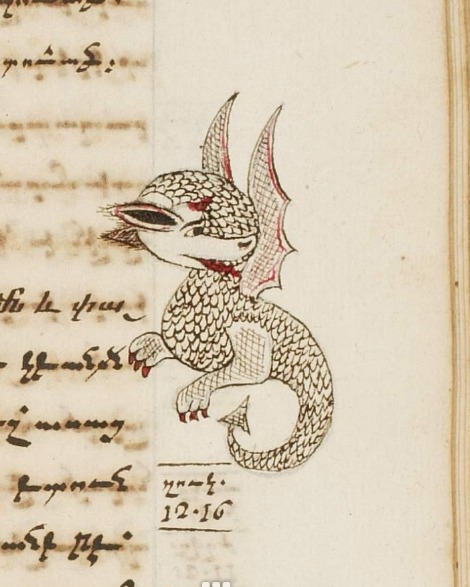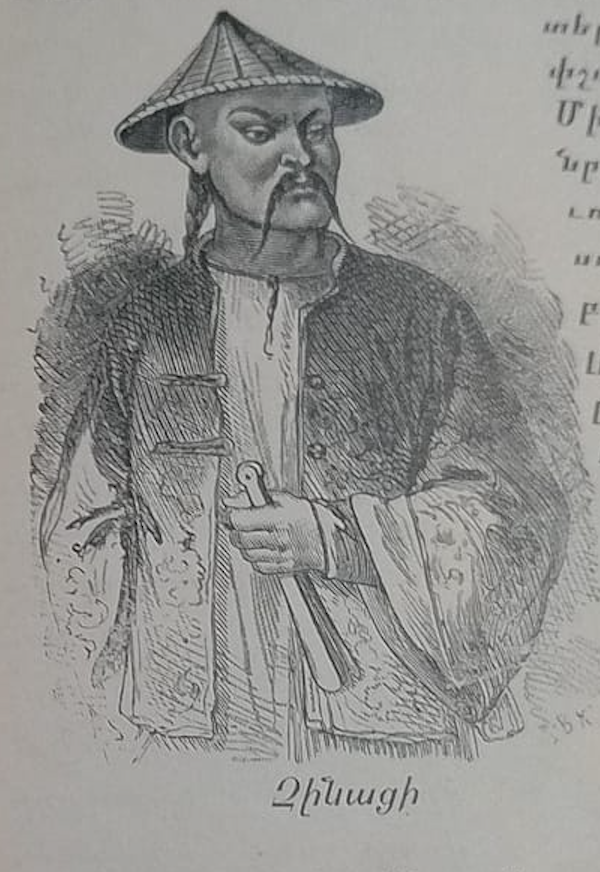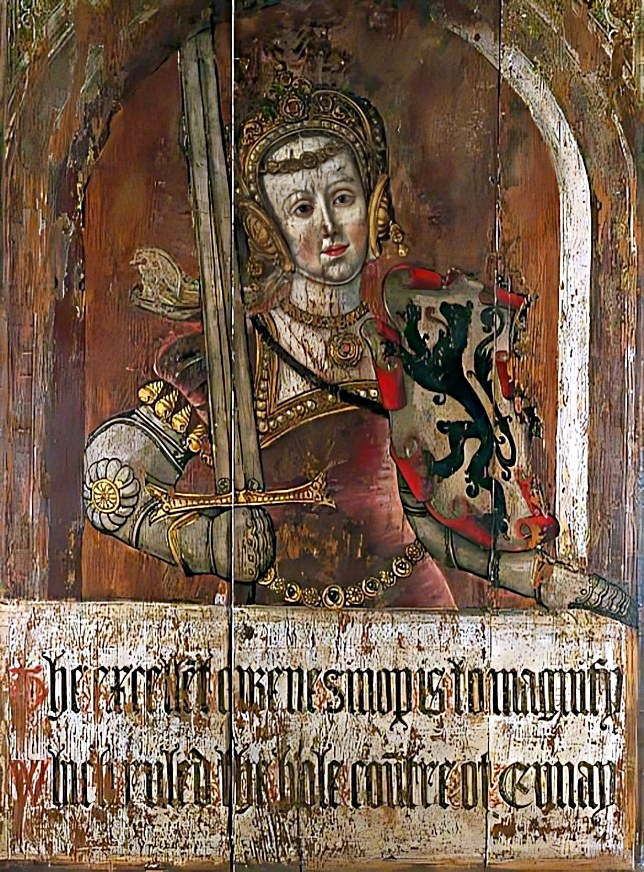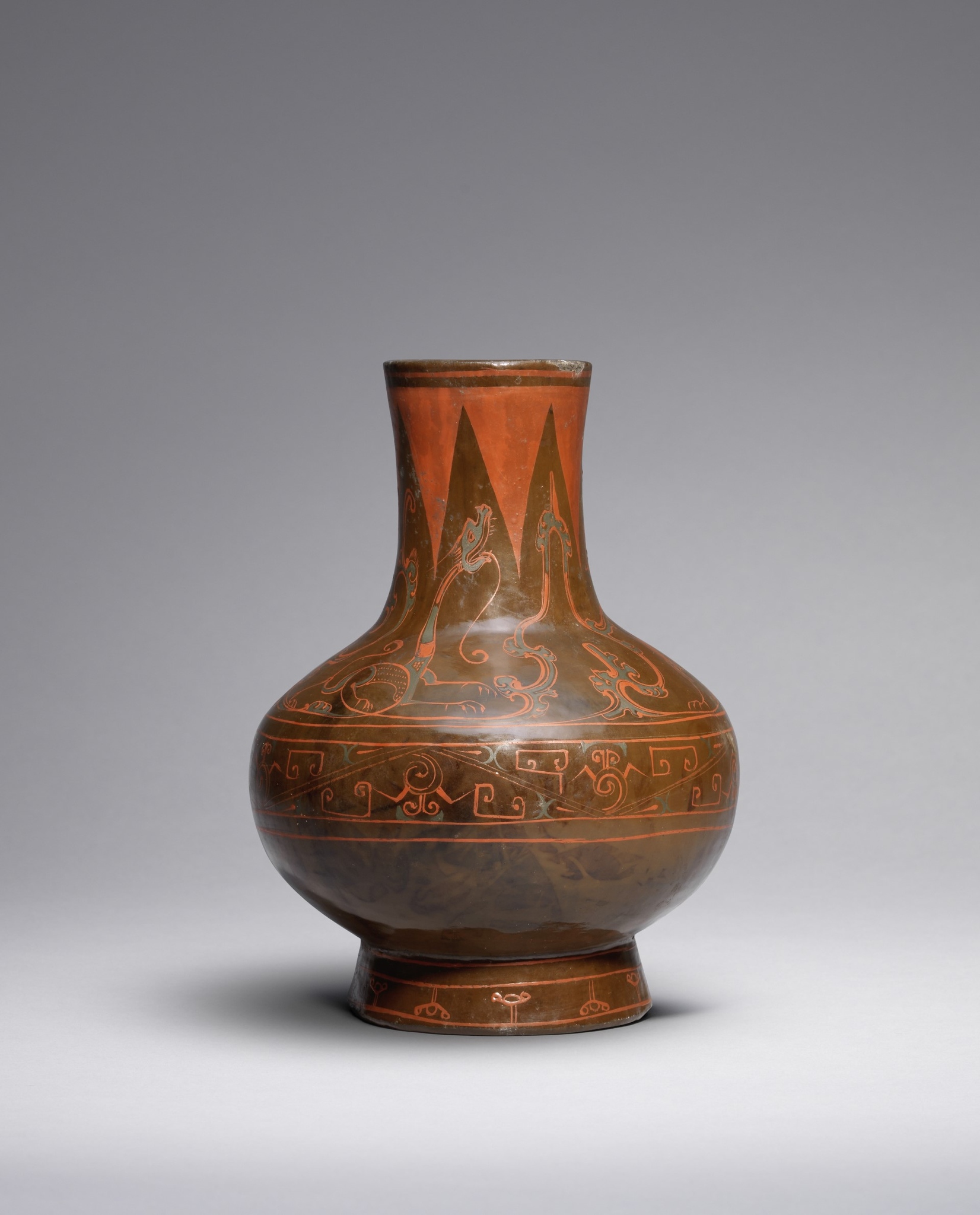
The Chinese dragon on the garb of the Cilician Armenian archbishop- as a symbol of cross-cultural interactions
Archbishop John (Yovhannēs), the brother of King Hethum I (1213 – 21 October 1270) ruled the Armenian Kingdom of Cilicia from 1226 to 1270), appeared in a Cilcian miniature painting- scene of consecration (Matenadaran MS 197, Gospel, Akner, Cilicia, year of 1287, commissioned by Archbishop John himself) in his full liturgical garb. His luxuriously-decorated ensemble displays a Chinese dragon, as an indication of the Armenian-Chinese thriving cultural interactions during the period.
The archbishop is depicted performing an ordination. On his tunic or alb, a liturgical garment worn under the chasuble, there is an isolated motif of a Chinese dragon woven in a gold with red outlines. The head of the dragon is raised vertically in profile while the neck, body, and tail wind upward. The visible feet have each three or four claws. As the brother of the king, the number three or four would place him in the proper subordinate rank of a prince. In front of the dragon’s open mouth is a leaf-like object, perhaps intended to be a flaming pearl. Perforce the silk was acquired before the year 1287/1289, the date of John’s death.
The textile in the miniature is a piece of Chinese silk used as an undergarment, but it’s hard to say whether the entire tunic was made of Chinese silk or the dragon was just a piece sewn on its front. However, the dragon’s resemblance to the authentic Chinese silks and their patterns is obvious.
As the Mongols approached the borders of Cappadocia and Cilicia, King Hethum made a strategic decision to submit to Mongol suzerainty, and sent his brother Sempad to the Mongol court in Karakorum. In 1254, Hethum himself traveled through Central Asia to Mongolia to renew the agreement, passing through the the eastern Asia Minor, the Mongol camp at Kars in Greater Armenia, the Iron Gates of Derbent at the western shore of the Caspian Sea, and from there across Asia to Karakorum. He brought a number of sumptuous presents, and met with Möngke Khan (Güyük’s cousin). The account of his travels was recorded by a member of his suite, Kirakos Gandzaketsi as “The Journey of Haithon, King of Little Armenia, To Mongolia and Back”. The journey chronicles of Hethum was later translated into Russian, French, English, and Chinese.
It’s worth mentioning that the narrative is significant for its observations of Mongol, Buddhist, and Chinese culture, geography, and wildlife.










